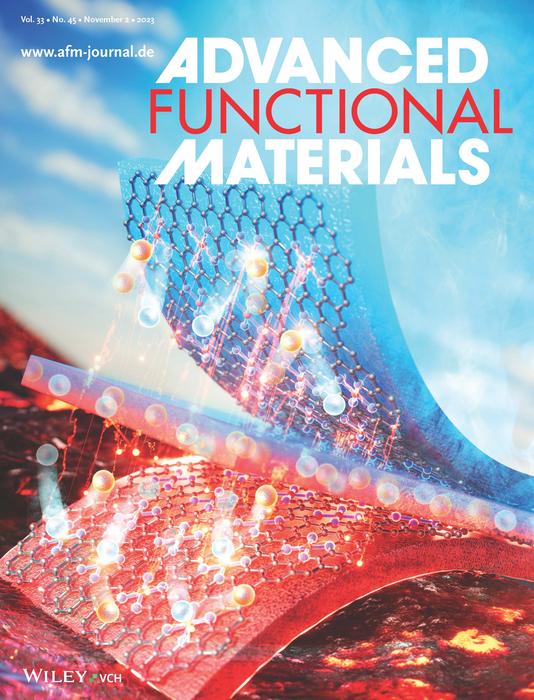The beloved character Lightening Man, a children’s hero, and the protagonist of the popular action series, Moving, possess the extraordinary ability to harness electricity at will. Remarkably, the generation of electricity from the human body may not be a superpower at all; rather, it appears to be a commonplace occurrence. Recent attention-grabbing research conducted by a team of POSTECH (Pohang University of Science and Technology) researchers has intensified the interest of the academic community, particularly for their efforts in enhancing the efficiency of a thermo-electrochemical cell capable of generating electricity from the human body’s natural temperature.

Credit: Advanced Functional Materials
The beloved character Lightening Man, a children’s hero, and the protagonist of the popular action series, Moving, possess the extraordinary ability to harness electricity at will. Remarkably, the generation of electricity from the human body may not be a superpower at all; rather, it appears to be a commonplace occurrence. Recent attention-grabbing research conducted by a team of POSTECH (Pohang University of Science and Technology) researchers has intensified the interest of the academic community, particularly for their efforts in enhancing the efficiency of a thermo-electrochemical cell capable of generating electricity from the human body’s natural temperature.
The study was led by Professor Yong-Tae Kim from the Department of Materials Science and Engineering and Graduate Institute of Ferrous & Eco Materials Technology, and Dr. Sang-Mun Jung and Seung-Yeon Kang, a master’s student, from the Department of Materials Science and Engineering at POSTECH in collaboration with Professor Dongwook Lee from the Department of Materials Science and Engineering at Hongik University. Their collective achievement revolves around the increased efficiency of thermo-electrochemical cells, which can convert wasted thermal energy or body temperature into electricity. The research findings are set to be published as a featured article on the inside back cover of the international journal, Advanced Functional Materials.
When electricity goes unused in either a household or an industrial setting, it dissipates as thermal energy. The concept of thermal energy harvesting has emerged as a solution to counteract energy depletion and address the climate crisis by harnessing electricity from this waste heat and human body heat. However, these cells, which electrochemically transform heat into electricity, face a significant challenge due to their low energy conversion efficiency and their reliance on precious metal catalysts like platinum, hindering their commercial viability.
To surmount this limitation, the research team employed an iron-based catalyst along with perchloric acid (CIO4-) anions. In essence, increasing the chaotropicity within the cell’s electrolyte generally results in higher voltage and increased current, thereby enhancing the cell’s efficiency. The introduction of perchloric acid was instrumental in augmenting the chaotropicity of the electrolyte, which contained iron ion redox pairs (Fe2+/F23+), thus improving the overall efficiency of the cell.
Furthermore, the team introduced a catalyst (Fe-N-C) composed of iron, nitrogen, and carbon to the thermo-electrochemical cell. This catalyst, frequently utilized in hydrogen vehicle fuel cells as an alternative to expensive platinum catalysts, represented an application in a thermo-electrochemical cell for the first time. In test trials, these cells achieved over twice the energy conversion efficiency compared to conventional cells while simultaneously reducing production costs by a factor of 3,000.
Professor Yong-Tae Kim commented, “Through our exploration of thermo-electrochemical cell catalysis, a relatively uncharted territory, we have successfully enhanced both efficiency and cost-effectiveness within the system.” He added, “We anticipate its widespread adoption in energy harvesting applications designed to generate energy from waste heat.”
The research was sponsored by the Future Material Discovery Program of the National Research Foundation of Korea.
Journal
Advanced Functional Materials
DOI
10.1002/adfm.202304067
Article Title
Fe─N─C Electrocatalyst for Enhancing Fe(II)/Fe(III) Redox Kinetics in Thermo-Electrochemical Cells
Article Publication Date
2-Nov-2023




